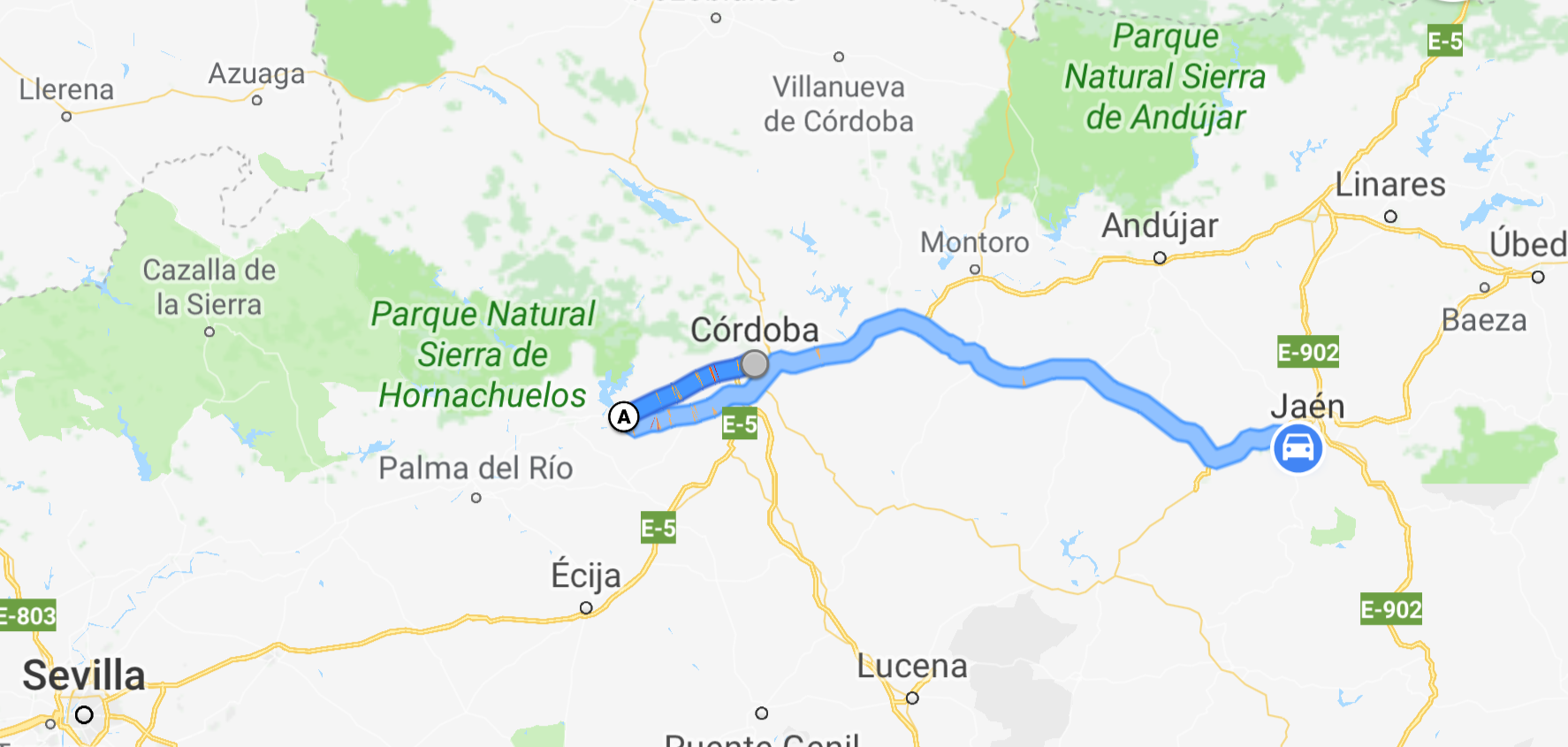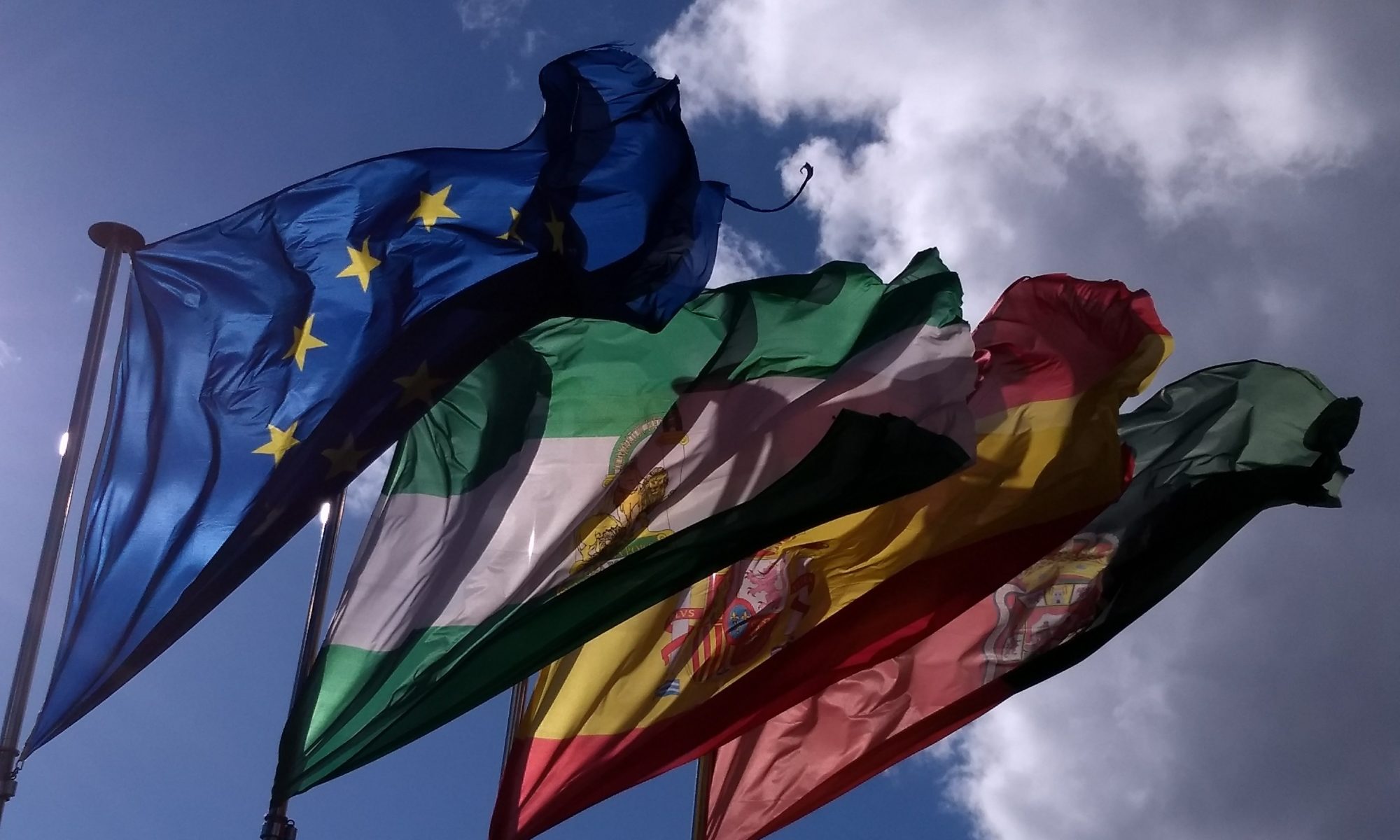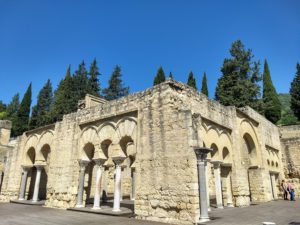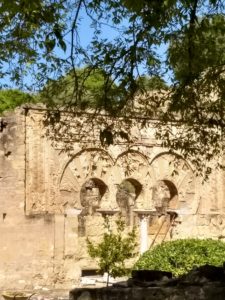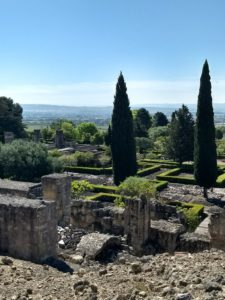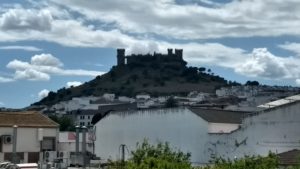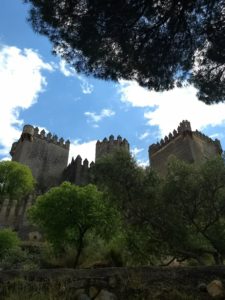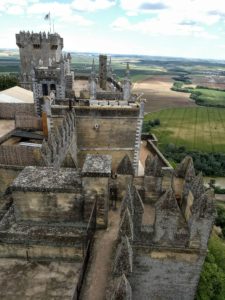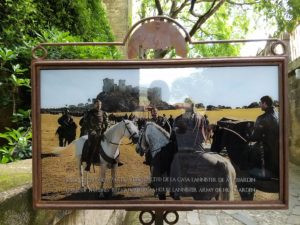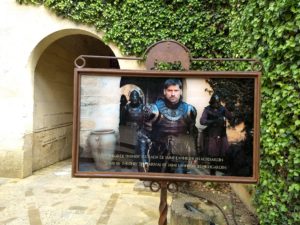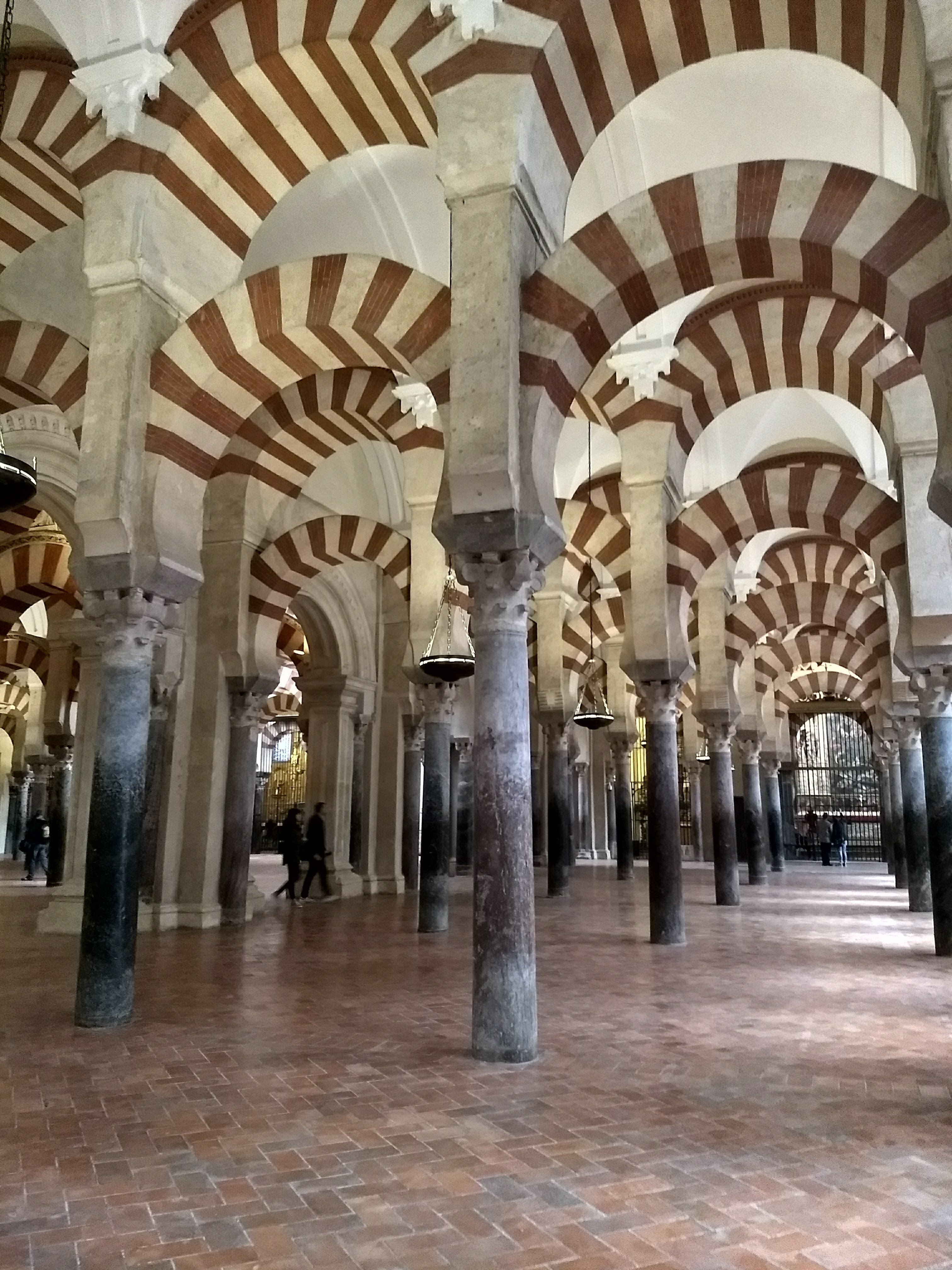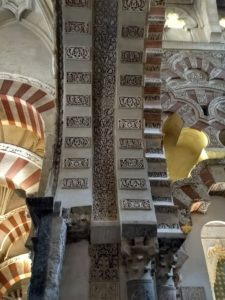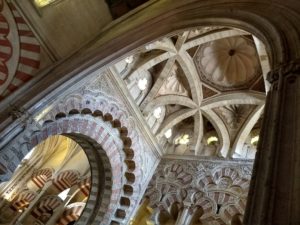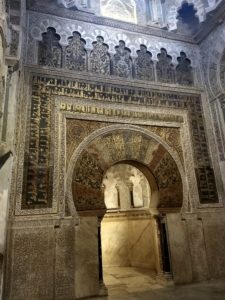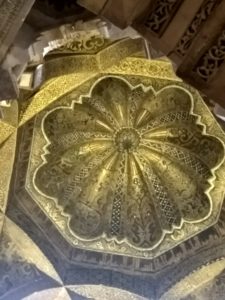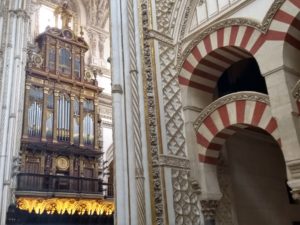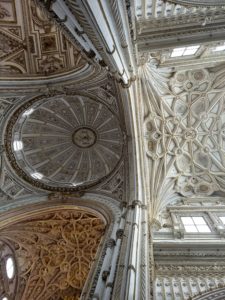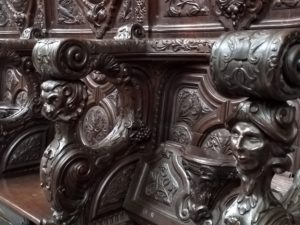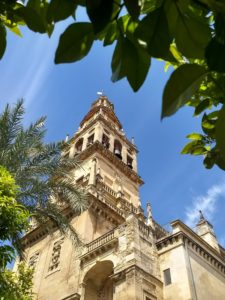… oder Medina Azahara – die Kalifenstadt ca. 10 km westlich von Córdoba, welche wir vor der Abreise Richtung Cazorla besuchen. Abd ar-Rahman III hatte im Jahr 936 den Auftrag zum Bau gegeben, 10 Jahre später war sie fertig gestellt, jedoch bereits 1010 während des Bürgerkriegs wieder zurück erobert. Was in der Folge nicht Plünderungen zum Opfer fiel, diente später als Baumaterial.
…or Medina Azahara, the caliphal city some 10 km West of Córdoba that we visited after leaving towards Cazorla. Abd ar-Rahmann III gave the orders for the completely new city to be built in 936 and ten years later it was completed, only to be destroyed in 1010 during the civil war that ensued on his death. What wasn’t plundered, was later reused as building material at other sites.
Die Hanglage der 112ha grossen Anlage begünstigt einerseits den Blick über das weite Umland, andererseits die terrassenförmige Bauweise. 1911 wurde mit den Grabungen begonnen, bisher jedoch erst 1/10 der Grundfläche freigelegt. Die oberste Stufe gehörte dem Kalifen (und der Küche), die nächste – von einer schönen Gartenanlage geziert – der Verwaltung, der Wartehalle für Geladene und Gäste und der Leibgarde. Der unterste Absatz der Wohnanlage beinhaltete Wohnhäuser, die Hauptmoschee und Werkstätten.
The 112 hectares of city were built on a slope, giving you a great view of the landscape around and allowing a terraced city layout. In 1911 the first digging at the site were started and until today only the first tenth of the total have been uncoverd. The highest level belonged to the Caliph’s living quarters (and his kitchen), the next -decorated with a beautiful garden complex- was used for the administration, the waiting rooms for the guests and ambassadors and his Life Guard. The lowest levels contained the living quarters for employees and servants/slaves, then Mosque and the work areas.
Ein junger Student führt uns durch die Ruinen und Originialstrassen und lüftet einige Geheimnisse. Wir entdecken eine Marmorwanne. Die Engländerin in der Gruppe rätselt, ob es die Badewanne des Herrschers war. Weit gefehlt. Wir stehen in den Pferde-Stallungen. Die Wanne, ursprünglich ein römischer Sarkophag, wurde von den Baumeistern des Kalifen aus einer nahegelegenen Ruine geborgen und fortan als Pferdetränke benutzt. Für Besucher ein untrügliches, Eindruck vermittelndes Zeichen von Macht und Wohlstand.
A young student shows us around the ruins with the original walls and streets and reveals some secrets, like when we are shown a marble tub. An English woman from our group wonders if it was the Caliph’s bath, but she is quite wrong. We are in the stables, and the „tub“ -originally a roman sarcophagus that was taken from a roman ruin- was used as a drinking trough for the horses. A sure way to impress your visitors and signal your wealth and power.
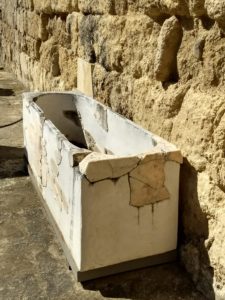
Alberto, unser Student, erzählt ausserdem die Geschichte eines Boten, der dem Kalifen eine schlechte Nachricht überbringen sollte und wie alle Gäste vor dem Empfang in der Wartehalle ausharren musste. Dem Kalifen kam zu Ohren, dass der Bote eine lange Wartezeit befürchtete – 2 ganze Jahre indes hatte er wohl nicht erwartet. Längst die Hoffnung auf „Audienz“ aufgegeben, wurde der Gesandte nach dieser Zeit frei gelassen. Er verliess die Kalifenstadt und wurde nach seinem Tod aufgrund seiner Geduld heilig gesprochen…
Alberto, our student, also tells us the story of a messenger that was bringing bad news to the Caliph. Like all messengers, he was made to wait, and the worse the news were, the longer you waited. In the end he stayed two years at Medina Azahara, in comfort, but probably haven given up hope of ever seeing the Caliph. He transmitted his message, the Caliph didn’t kill the messenger and he was allowed to leave the city, later being canonized for his patience…
Etwa 15km westlich der Medina Azahara liegt das Dorf Almodóvar del Río, von dem bereits eine direkte Strasse zur Kalifenstadt führte. Gut sichtbar steht eine teilweise aus dem 8. Jht. stammende Mauren-Burg. Sie wurde mehrfach restauriert und bis in die 30-er-Jahre des vorigen Jhts. von einem spanischen Adligen zur „heute besterhaltenen Burg Spaniens“ aufwendig renoviert und restauriert. Selbstverständlich erklimmen wir den Hügel und sehen uns eine weitere Stätte von Dreharbeiten zu „Game of Thrones“ an. In den verwinkelten Mauern spielte Jamie Lannister (Nikolaj Coster-Waldau) einige Szenen. Wenn ich ein wenig warte, kommt er bestimmt um die Ecke. Schmelz…
Some 15 km West of Median Azahara we find the village of Almodóvar del Río, on the road that leads directly to the Caliphal city. The view is dominated by a castle that originally dates back to the 8th century and the moorish epoch. It decayed almost completely until the owner decided to reconstruct it to become one of the „best preserved“ castles in Spain. Of course we walk up the hill and see the locations of more Game of Thrones episodes. Jamie Lannister (Nikolaj Coster-Waldau) appeard in- and outside the angled walls. If I wait long enough, he will surely appear. Swoon….
